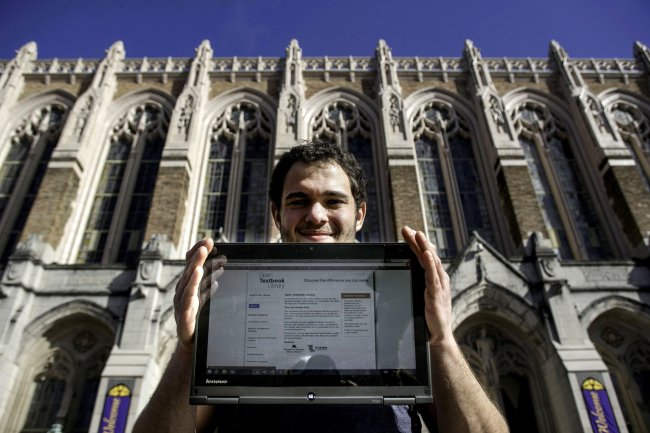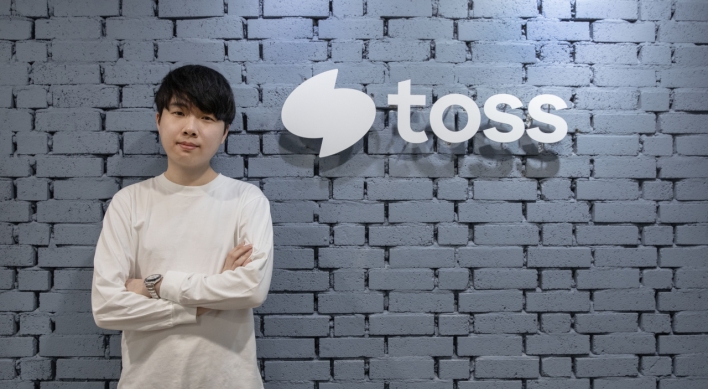Students press professors to open minds to cheaper textbooks
By Korea HeraldPublished : March 19, 2014 - 19:29
SEATTLE ― In deciding which classes she’ll take every quarter, Alissa Ramberg often applies the textbook-cost-factor test: She figures out which professors require pricey textbooks, and avoids those classes.
The University of Washington senior and student-government senator, who is majoring in political science, has also put off taking classes ― and even chosen alternative courses that still fill the requirement ― to try to control how much she must shell out for books.
The price of college textbooks has risen at four times the rate of inflation in the past two decades, according to one study. Now, students are trying to gain some control over spiraling prices by asking professors to seek out less-expensive alternatives.
This month, the University of Washington Student Senate unanimously passed a resolution encouraging professors to consider using open textbooks ― free or low-cost online versions ― and other less-expensive materials.
At Tacoma Community College, students voted to use student funds for a pilot project that helps professors find online resources to substitute for textbooks.
The Tacoma project, in its second year, paid for itself in just nine months. It has saved students $643,000, college officials estimate.
College students spend up to $1,200 a year on textbooks, according to the College Board. That’s the equivalent of one-tenth of the cost of a year’s tuition at the University of Washington, and a staggering one-third the cost of tuition at a community college.
The University of Washington senior and student-government senator, who is majoring in political science, has also put off taking classes ― and even chosen alternative courses that still fill the requirement ― to try to control how much she must shell out for books.
The price of college textbooks has risen at four times the rate of inflation in the past two decades, according to one study. Now, students are trying to gain some control over spiraling prices by asking professors to seek out less-expensive alternatives.
This month, the University of Washington Student Senate unanimously passed a resolution encouraging professors to consider using open textbooks ― free or low-cost online versions ― and other less-expensive materials.
At Tacoma Community College, students voted to use student funds for a pilot project that helps professors find online resources to substitute for textbooks.
The Tacoma project, in its second year, paid for itself in just nine months. It has saved students $643,000, college officials estimate.
College students spend up to $1,200 a year on textbooks, according to the College Board. That’s the equivalent of one-tenth of the cost of a year’s tuition at the University of Washington, and a staggering one-third the cost of tuition at a community college.

At a time when tuition has also skyrocketed, the cost of books has prompted many students to simply skip buying them, or search for classes that require less-expensive options, according to a student survey conducted by the nonprofit Public Interest Research Group, or PIRG, which has campaigned across the country for lower textbook costs.
Students find it especially aggravating when professors put an expensive book on the class list, then hardly refer to it. “So many books are underused in classes ― you look at them three times, and they cost $150,” said Ramberg, who helped push for passage of the resolution in her role as student senator.
Some professors worry that the free textbooks won’t match the quality of books produced by major publishers, or that they will be out of date or poorly edited.
But Charles Woldorff, a University of Washington freshman and intern at WashPIRG ― the state offshoot of PIRG ― said he’s spent as much as $200 on a single textbook this year. “There’s really nothing students can do about it, because publishers have control of the market,” said Woldorff, who lobbied for the resolution.
Publishers often bundle added materials with textbooks, boosting the price, or introduce new editions with minor changes, making it impossible for students to sell back the old edition, said Woldorff, an economics major.
He hopes that if more professors adopt open textbooks, book publishers will be forced to lower their prices to stay competitive.
Tacoma Community College’s student government helped pay to hire a specialist, Quill West, to help professors track down low-cost alternatives to textbooks.
West says there’s a growing online library of textbooks that rival the quality of books from top textbook publishers. The challenge is finding and evaluating them.
While textbook publishers spend big money promoting their products, the open-source options are harder to locate ― after all, there’s no marketing juggernaut behind them.
“The traditional textbook publishers do some amazing work,” West said. “It’s just that the price of those materials has reached a level where our students can’t sustain it anymore.”
And West said that for some classes, open materials can be superior.
For example, students in a nutrition class worked with original research papers and assessed nutritional claims on products and foods instead of using a textbook. “That’s much more interesting than reading a textbook and finding out why something is good, or not good, for the heart,” West said.
The Washington State Board of Community and Technical College has also developed its own Open Course Library, a project that assembled all curriculum materials online for the 81 most popular courses offered at Washington’s community and technical colleges.
As part of that initiative, the state identified or helped create online textbooks and class materials for each course that could be purchased for $30 or less.
The board estimates the Open Course Library has saved students at least $5.5 million to date.
Still, “to no one’s surprise, it’s not that easy” to get professors to adopt open textbooks, said Connie Broughton, director of e-learning and open education for the state board.
A recent study published by a marketing-research arm of the National Association of College Stores suggested that only a small number of professors were using the board’s Open Course materials.
Broughton said the survey was flawed, and left out a lot of the resources that the students are using.
Woldorff, at the University of Washington, said the resolution there puts an official stamp on work WashPIRG students have been doing to try to get more professors to adopt open textbooks.
“If a professor would assign just one of these open textbooks, it could save every student in that classroom $100 to $200,” he said.
By Katherine Long
(The Seattle Times)
(MCT Information Services)
-
Articles by Korea Herald


![[AtoZ into Korean mind] Humor in Korea: Navigating the line between what's funny and not](http://res.heraldm.com/phpwas/restmb_idxmake.php?idx=644&simg=/content/image/2024/04/22/20240422050642_0.jpg&u=)



![[Herald Interview] Why Toss invited hackers to penetrate its system](http://res.heraldm.com/phpwas/restmb_idxmake.php?idx=644&simg=/content/image/2024/04/22/20240422050569_0.jpg&u=20240422150649)

![[Graphic News] 77% of young Koreans still financially dependent](http://res.heraldm.com/phpwas/restmb_idxmake.php?idx=644&simg=/content/image/2024/04/22/20240422050762_0.gif&u=)






![[Exclusive] Korean military set to ban iPhones over 'security' concerns](http://res.heraldm.com/phpwas/restmb_idxmake.php?idx=652&simg=/content/image/2024/04/23/20240423050599_0.jpg&u=)



